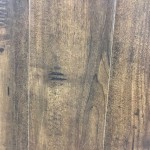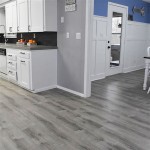Honey Colored Wood Flooring: A Warm and Inviting Choice
Honey colored wood flooring represents a versatile and appealing choice for homeowners seeking to imbue their spaces with warmth and character. This flooring option, characterized by its golden-brown hue reminiscent of natural honey, offers a unique combination of aesthetic appeal, practical benefits, and compatibility with diverse design styles. The popularity of honey colored wood flooring stems from its ability to create a welcoming atmosphere while maintaining a sense of sophistication and elegance.
The term "honey colored" encompasses a range of shades, from light, airy golden tones to deeper, richer amber hues. This variation allows for significant flexibility in design, enabling homeowners to select a shade that perfectly complements their existing décor and personal preferences. The natural variations within the wood grain, further enhanced by the honey coloration, contribute to the floor's unique character and organic aesthetic. This characteristic is particularly desirable for those aiming to bring a touch of nature indoors.
Considered a neutral-leaning tone, honey colored wood flooring acts as a remarkably adaptable backdrop for a variety of interior design schemes. It pairs well with both warm and cool color palettes, allowing for seamless integration with existing furniture, artwork, and accessories. This adaptability makes it a practical choice for homeowners who anticipate future renovations or style changes, as the flooring will likely remain a cohesive element within the evolving design.
Understanding the Appeal of Honey Colored Wood
The enduring appeal of honey colored wood flooring resides in its ability to evoke feelings of comfort, warmth, and serenity. The color itself is inherently inviting, creating a relaxed and welcoming atmosphere within a space. This effect is particularly beneficial in areas intended for relaxation and social interaction, such as living rooms, bedrooms, and dining areas. The warmth of the honey tone adds a layer of coziness that can transform a house into a home.
Beyond its aesthetic qualities, honey colored wood flooring offers practical advantages. The mid-tone color effectively masks minor scratches, dust, and everyday wear and tear, making it a relatively low-maintenance flooring option. This is especially valuable in high-traffic areas or homes with children and pets. While regular cleaning is still necessary, the forgiving nature of the color reduces the visibility of imperfections, contributing to a cleaner and more polished appearance overall.
Furthermore, the inherent light-reflecting properties of honey colored wood can contribute to a brighter and more open feel, particularly in rooms with limited natural light. The warm tones absorb and reflect light in a way that minimizes shadows and maximizes the perceived size of the space. This can be a significant advantage in smaller rooms or those with less access to sunlight. The strategic use of honey colored wood flooring can effectively enhance the overall ambiance and visual appeal of a room.
The psychological effect of honey colored wood also contributes to its popularity. Warm tones are often associated with happiness, optimism, and security. Incorporating these tones into the home environment can positively influence mood and create a sense of well-being. This subtle yet powerful effect further enhances the appeal of honey colored wood flooring as a long-term investment in both the aesthetic and emotional value of a home.
Types of Wood Available in Honey Tones
Various wood species naturally exhibit honey-colored tones, offering a range of options to suit different budgets and aesthetic preferences. Oak, both red and white oak, is a popular choice for honey colored flooring due to its durability, availability, and distinctive grain patterns. Red oak tends to have a slightly warmer, pinkish undertone, while white oak is typically lighter and more neutral. Both oak varieties readily accept stains and finishes, allowing for customization of the final color.
Maple is another excellent option for achieving a honey colored look. Known for its fine grain and consistent color, maple offers a sleek and contemporary aesthetic. It typically exhibits a lighter, more subtle honey tone than oak, making it a good choice for those seeking a more understated look. Maple is also a harder wood than some other species, making it a durable and long-lasting flooring option.
Other wood species that can be stained or naturally exhibit honey hues include birch, pine, and cherry. Birch offers a similar aesthetic to maple but is often more affordable. Pine, known for its rustic charm, can be stained to achieve a warm honey color, although it is a softer wood and more prone to dents and scratches. Cherry, with its rich, reddish-brown undertones, can be stained to create a deep, luxurious honey color, although it tends to darken over time with exposure to light.
Beyond solid hardwood, engineered wood flooring also offers a wide range of honey colored options. Engineered wood consists of a thin layer of hardwood veneer bonded to a core of plywood or other composite material. This construction makes it more resistant to moisture and temperature fluctuations than solid hardwood, making it a suitable choice for basements and other areas prone to humidity. Engineered wood flooring is available in a wide variety of species and finishes, allowing homeowners to achieve the desired honey colored look with added stability and versatility.
Considerations for Decorating with Honey Colored Flooring
When decorating with honey colored wood flooring, it is important to consider the existing color palette of the room and choose complementary colors for walls, furniture, and accessories. Honey tones pair well with a wide range of colors, but some combinations are particularly effective at creating a harmonious and balanced look.
For a warm and inviting space, consider pairing honey colored flooring with warm neutrals such as beige, cream, and ivory. These colors create a soft and cohesive look that enhances the warmth of the flooring. Accents in shades of green, terracotta, or mustard yellow can add pops of color and further enhance the overall warmth and richness of the design.
To create a more modern and sophisticated look, consider pairing honey colored flooring with cool neutrals such as gray, white, and black. These colors provide a striking contrast to the warmth of the flooring, creating a visually dynamic and balanced space. Accents in shades of blue, teal, or silver can add touches of sophistication and elegance.
The choice of furniture style can also significantly impact the overall look and feel of the room. Honey colored flooring pairs well with both traditional and contemporary furniture styles. Traditional furniture in dark woods such as mahogany or walnut can create a sense of formality and elegance, while contemporary furniture in lighter woods or metal can create a more relaxed and modern look. Upholstered furniture in neutral fabrics such as linen or cotton can provide a comfortable and inviting contrast to the warmth of the flooring.
Rugs can also be used to define specific areas within a room and add visual interest to the space. Consider using rugs with complementary colors and patterns to enhance the overall design. A large area rug in a neutral color can anchor the furniture and create a cohesive seating area, while smaller rugs in bolder colors or patterns can add pops of color and visual interest to specific areas of the room.
Finally, lighting plays a crucial role in enhancing the beauty of honey colored wood flooring. Natural light is ideal for highlighting the warmth and richness of the wood, while artificial lighting can be used to create different moods and effects. Warm-toned light bulbs can enhance the warmth of the flooring, while cool-toned light bulbs can create a more modern and sophisticated look. Layering different types of lighting, such as ambient lighting, task lighting, and accent lighting, can create a well-lit and visually appealing space.
Ultimately, the key to successfully decorating with honey colored wood flooring is to create a balanced and harmonious design that reflects personal style and preferences. By carefully considering the color palette, furniture style, rugs, and lighting, homeowners can create a warm, inviting, and visually appealing space that showcases the beauty of this versatile flooring option.

Wire Brushed Honey White Oak Flooring Hardwood Bargains Www Hardwoodbargains Com Html

Oak Honey 3 Great Lakes Flooring Quality Service Innovation

Hand Sc Honey Birch Flooring Hardwood Bargains Www Hardwoodbargains Com Html

Piedmont Honey Impressions Flooring Collection

Wooden Floors With Warm Tones Ambience Hardwood Flooring

52 Enticing Kitchens With Light And Honey Wood Floors S

Serenity Honey Impressions Flooring Collection

Pin By Dani Lee On Floor Ideas Oak Trim Paint Colors House Design

Floorus Com 3 4 Solid Hardwood Kempas Floor 5 Natural Honey Rose Premium

Hardwood Flooring Vs Laminate Which Is For You John K Eareckson Co
Related Posts








